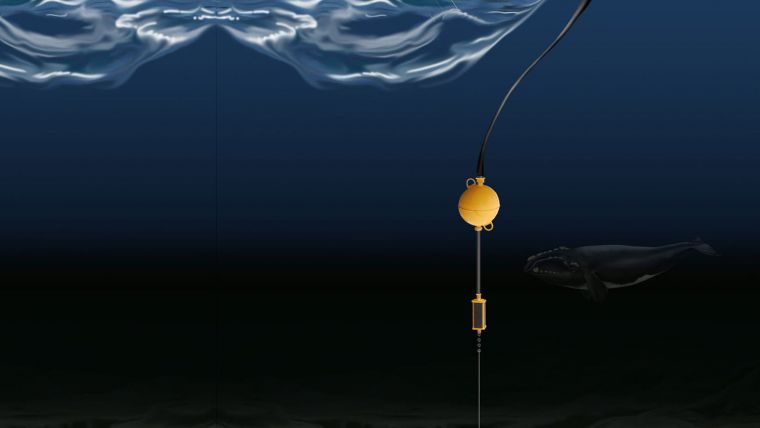How Remote Acoustic Technologies Can Protect Marine Life
From hydrophones attached to buoys or autonomous vehicles to a passive acoustic monitoring system, WHOI scientists and engineers have developed innovative methods to monitor marine mammals in real time. The idea is simple: if authorities are aware of the presence of migrating whales, they will be able to tell ships to slow down, drastically reducing the likelihood of a fatality. Remote acoustic technologies can also alert scientists to a stranding event, buying critical time to save the animal’s life.
Ships and fishing gear are not the only man-made hazards that whales face. Noise in the marine environment also causes distress, impacting the whales’ ability to feed and communicate. That’s why offshore wind operators are required to monitor for the presence of marine mammals during construction and operation. With several large-scale wind farms planned along the U.S. East Coast, the need for accurate, real-time monitoring technologies is enormous. But obstacles – such as maintaining the gear and recovering data from remote offshore locations – remain.
Offshore Wind Farm
In a bid to overcome these challenges, WHOI has teamed up with Greentown Labs, a cleantech incubator in North America, and Vineyard Wind, the developer of a proposed 800 megawatt offshore wind farm off the coast of Martha’s Vineyard, to launch the Offshore Wind Challenge. The programme, which is also partnering with New England Aquarium, calls on entrepreneurs to submit proposals to collect, transmit and analyse marine mammal monitoring data using remote technologies, such as underwater vehicles, drones and offshore buoys.
Caption: Hydrophones on mooring lines are able to detect whale sounds, but violent seas make it difficult to discern them from the sound of rushing water. To solve the problem, WHOI engineers designed a two-tiered mooring line, separated by a steel flotation sphere. In rough seas (right panel), the tough, stretchy 'Gumby hose' on top acts like a bungee cord, absorbing the tension of the surface buoy. The bottom line is decoupled from the movements of the top line; it remains a stable, quiet platform for the hydrophone. (Illustration by E. Paul Oberlander, © Woods Hole Oceanographic Institution)
Read the full story here.














